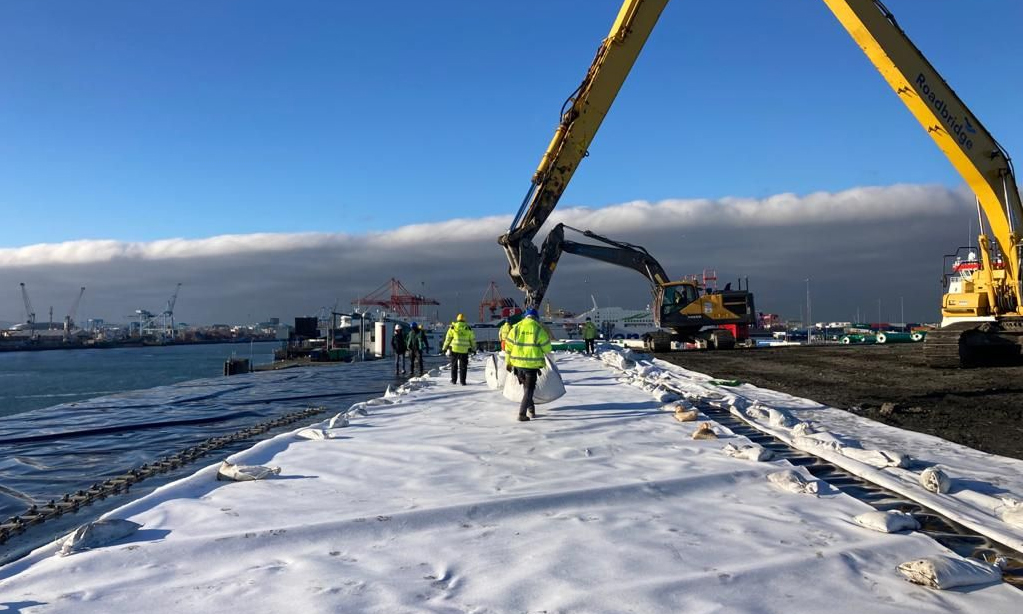
22 Feb Geotextiles and Geosynthetics Working Together
Exploring the Collaborative Power of Geotextiles with Other Geosynthetic Materials
In the realm of civil engineering and construction, the utilization of geosynthetic materials has revolutionized the way we approach infrastructure projects. Among these materials, geotextiles stand out as versatile fabrics with a wide range of applications. However, the true potential of geotextiles often lies in their ability to work synergistically with other geosynthetic materials, creating innovative solutions that address complex engineering challenges with efficiency and effectiveness.
Understanding Geotextiles and Other Geosynthetics
Geotextiles are permeable fabrics made from synthetic fibers, engineered to perform various functions such as filtration, separation, reinforcement, and erosion control. They are commonly used in civil engineering projects to improve soil stability, enhance drainage, and protect geomembranes. However, geotextiles are just one component of a broader category of geosynthetic materials that includes geogrids, geomembranes, geocells, and geocomposites.


Collaborative Applications
1.Reinforcement and Stabilization:
Geotextiles often collaborate with geogrids to reinforce and stabilize soil structures. While geotextiles provide separation and filtration functions, geogrids offer high tensile strength and stiffness, improving load distribution and reducing settlement. Together, they form a robust reinforcement system that enhances the stability of embankments, retaining walls, and steep slopes.
2.Drainage Systems:
Geotextiles play a crucial role in drainage systems when used in conjunction with geocomposites or drainage geonets. By providing a protective barrier and filtration medium, geotextiles prevent clogging of drainage pipes and geonets, allowing for efficient water flow while retaining soil particles. This collaboration ensures effective drainage and groundwater control in various applications, including roadways, landfills, and sports fields.
3.Erosion Control and Vegetation Support:
Geotextiles complement erosion control measures when combined with erosion control blankets or turf reinforcement mats. These composite systems provide immediate erosion protection and facilitate vegetation establishment, stabilizing soil surfaces and preventing erosion caused by rainfall, wind, or water runoff. Geotextiles offer mechanical protection and soil stabilization, while erosion control blankets or mats provide temporary cover and support for vegetation growth.
4.Barrier and Containment Systems:
In containment applications such as landfills or reservoirs, geomembranes and geotextiles collaborate to create impermeable barriers that prevent the migration of fluids or contaminants. Geotextiles serve as protective cushioning and puncture resistance layers, while geomembranes provide impermeable barriers that isolate hazardous materials and protect the environment.
Benefits of Collaboration
1.Enhanced Performance:
Collaborative systems combining geotextiles with other geosynthetics offer enhanced performance and functionality compared to individual materials. By leveraging the unique properties of each component, these systems address multiple engineering challenges simultaneously, resulting in superior performance and longevity.
2.Optimized Design:
The collaborative use of geotextiles with other geosynthetics allows for optimized design solutions tailored to specific project requirements and site conditions. Engineers can customize systems to achieve desired outcomes such as increased stability, improved drainage, or enhanced erosion control, optimizing the use of materials and resources.
3.Cost-Effectiveness:
Collaborative systems often provide cost-effective solutions by reducing the need for additional materials, minimizing construction time and labor costs, and extending the lifespan of infrastructure. By addressing multiple functions with integrated systems, these solutions offer long-term value and sustainability.
Conclusion
In the dynamic landscape of civil engineering and construction, the synergy between geotextiles and other geosynthetic materials represents a cornerstone of innovation and progress. By harnessing the collaborative power of these materials, engineers can overcome complex challenges, achieve superior performance, and build resilient infrastructure that stands the test of time. As we continue to explore new frontiers in geosynthetics, the collaborative approach will undoubtedly remain a driving force in shaping the future of civil engineering and construction practices.


No Comments